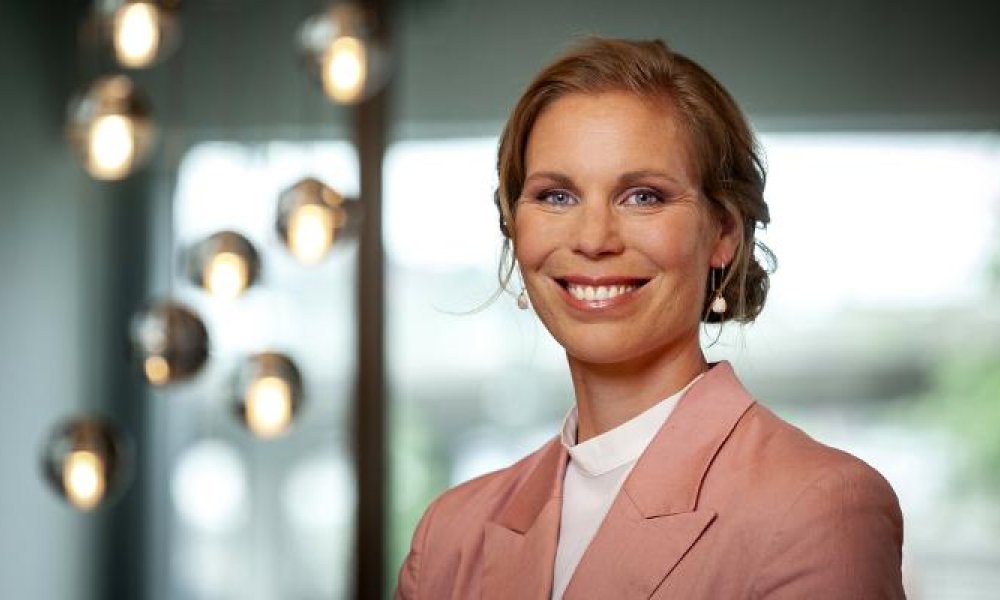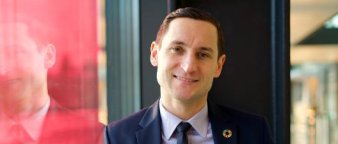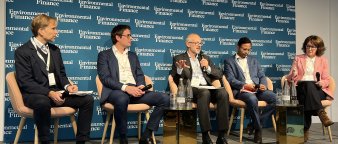What is the role trust in what you do?
– Our clients trust in us a lot, and we should be their partners. They are not experts on everything and they can outsource the management of their portfolio to us. Our job is to earn and then manage their trust well. An important way of doing that is through being honest and transparent, delivering on our role and our promises, and having a good dialogue with all clients.
How do you get more familiar with your clients, to cater to their needs?
– We have a process of defining certain characteristics of clients, such as their regulatory contexts, solvency needs, and sustainability requirements, which helps us quickly understand their priorities and needs. In addition, we also try to bring them together to collectively define their needs.
For example it is better if a group of insurance companies work together to define and communicate their needs to us on sustainability, so that we can better deliver on their priorities. I always tell my clients their potential of engaging with us. If they collaborate their needs are more clearly defined and it is easier for us to shape products and value propositions to fit those needs.
As a Nordic institution headquartered in Norway, how do you build trust with Swedish clients?
– For a Swedish team in what has sometimes been seen a Norwegian institution, there have been some challenges. In some ways we have been well known as a local partner here in Sweden, for instance through SPP, but maybe not as "Storebrand Asset Management" now that we have completed the rebranding of Swedish operations and our repositioning as a Nordic financial group.
Building trust in Sweden is different than in some other markets, because asset managers and their clients get a very high level of scrutiny from the Swedish media on the issue of sustainability. For example, the fossil-free movement here in Sweden gets high levels of media attention and influences institutions, politicians, individuals that have exposure to these sectors. Our media is quite binary too, which in my opinion, has to some degree hampered Swedish clients' adoption of investments in decarbonisation transition assets. People are quite afraid on being on the front page of the media in what might not be a very nuanced framing of an issue, such as what it actually takes to transition to a low carbon future state.
In Sweden, there is also more focus on gender equality as well, including the composition of the team, as well as the sustainability aspects of investment products.
How can the dilemma of sustainability impact be resolved?
– We could actually take it a step backwards: When it comes to many asset classes, we cannot even define what is impact, let alone measure it. What impact is depends a lot on who you ask - do you focus on additionality, and so on? It is very difficult. You can measure by taxonomy or Paris Agreement alignment, but it is going to be years before we get good data, and that would only cover relatively small spectrums of the investment universe.
That said, there is a lot positive with the SFDR, as it relates to trust. These standardised reporting requirements will provide a more level playing field for clients to evaluate performance and ideally this can create more trust in our industry.
If it is difficult to gauge the impact of what you do, what is guiding you? How do you know you are doing the right thing?
– I usually tell my clients two things. First, it is difficult to find "the best" fund, from a sustainability perspective, or even from a risk-return perspective. But it is probably easier to identify two or three partners that are good overall at sustainability, pick one of them to partner with and then of course choose funds.
The second thing is to take a broader perspective on data. To some extent it is better to review it holistically, and prioritise seeing the direction things are going in, and perhaps give more weight to certain areas that might be important to you. If the client is a workers' union then they care more about workers' rights, which colours what sustainability means for them - and we give extra weight to those practices in our sustainability assessment.
What is inspiring you these days in and outside of the sector?
– I am part of an all-female Swedish financial network called KvinnoKapital in which more of the members are steadily moving into senior positions. Our network is really flourishing and has started to have real business effect. That's fantastic. It's also very inspiring to see my teammates step up new responsibilities and contribute to developments here in our Swedish branch of Storebrand Asset Management.
Also, on a personal level – it is going to be very challenging to practice for this and participate in – but in March next year I want to compete in the Vasaloppet, which is the world's biggest cross country skiing race in terms of participation. It's a 90-kilometer course throughout Sweden and it should be a lot of fun.







